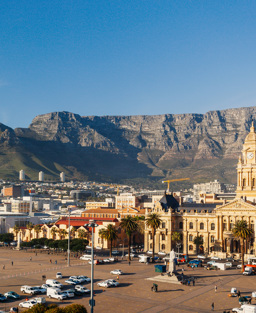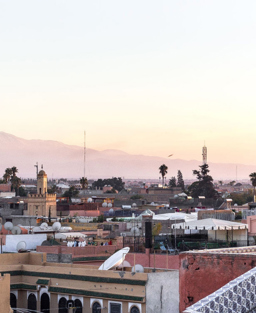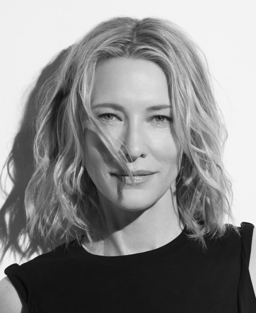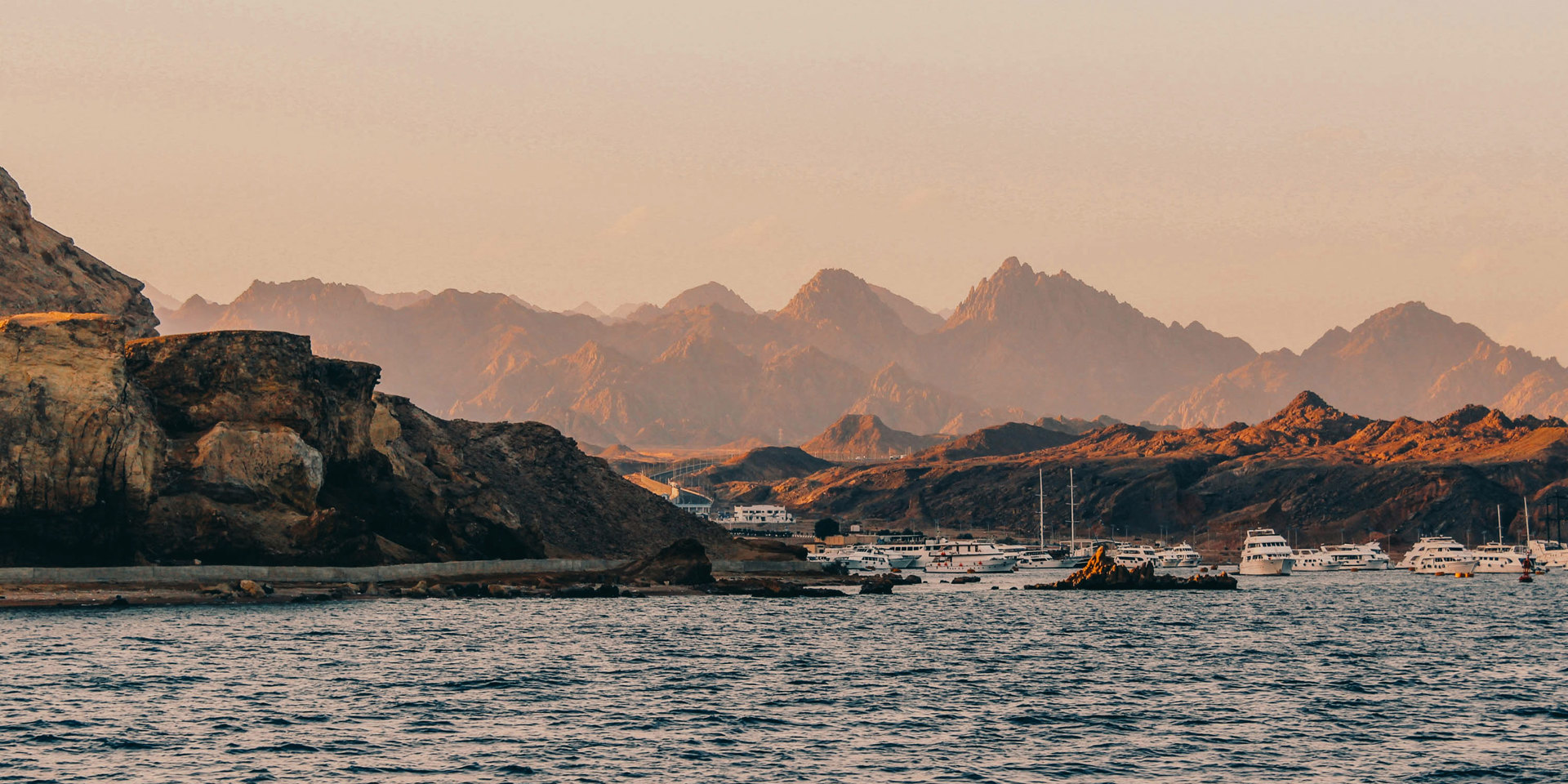

Sharm El Sheikh for every traveller
Sharm El Sheikh is a five-and-a-half hour flight from London, making it a haven for those who want winter sun without the schlep. And with its gentle, family-friendly waters, flourishing coral reefs and historic monasteries, Lauren Keith knows there’s plenty to delight all visitors
01/08/2022Updated 22/02/2025
Bathed in year-round sunshine, Sharm El Sheikh and the wider Sinai Peninsula are a mecca for travellers seeking that blast of vitamin D when the cold and damp creeps into blustery northern climes. But a getaway here is no ordinary day in the sun. Below the blue that edges Egypt’s eastern coast lies a globally important treasure: the underwater world of the Red Sea, where technicolour coral reefs thrive, defying climate change.
It’s a marvel for scuba and snorkellers, with sea so clear it will make you squint. And even more adventures await in the Sinai Peninsula’s mountainous interior, best explored with the Bedouin, who know their home like no one else. Sharm El Sheikh has a side for every kind of traveller, whether active or laidback or somewhere in between.
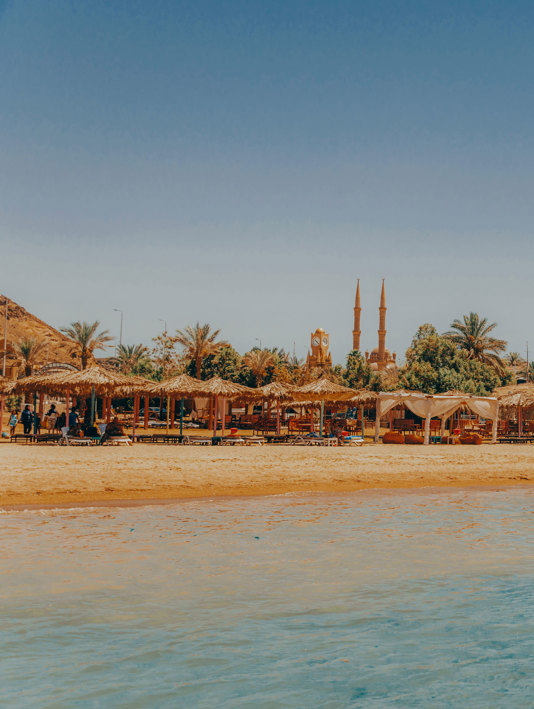

Na’ama Bay with the Al Sahaba Mosque in the background (Adobe Stock); Al Sahaba Mosque (Omar Elsharawy). Opening image: yachts moored in Sharm’s warm waters (Irina Nakonechnaya)
Sharm El Sheikh for families
Pulling off a perfectly executed family holiday is not for the faint-hearted, but Sharm has all the trappings of a well-rounded adventure for the entire gang. The smile-shaped inlet of Na’ama Bay welcomes swimmers of all abilities with gently breaking surf and sun-loungers aplenty, while sandy volleyball pitches and beach games will do everything to tempt you from your berth. Most of the sand here is claimed by hotels but, if you’re staying elsewhere, many allow use of their amenities for a small day fee.
Sprawling along Egypt’s most southeasterly point, Sharm faces on to the Gulf of Aqaba, whose blooming coral-scapes are the perfect playground for shallow water snorkellers. Glide toward the vertical wall reefs and you’ll be surrounded by marine life so diverse, you’ll feel as if you’ve been plunged into a well-stocked aquarium. Here, lionfish lurk and neon parrotfish drift, inspecting the fingers of soft coral waving in the current.
As the air cools, leave the beach behind for Sharm’s Old Market area, which, if you’re familiar with Cairo, is a far cry from the bedlam of Khan el-Khalili market. Here, the shopping cluster spreads out across streets set out in an easily navigable grid (instead of the narrow, at-times intimidating alleyways of the Egyptian capital). Time your visit for the evening call to prayer, which rings out from the minarets of the Al Sahaba Mosque, whose stepped domes and swirling columns glow gold in the evening light.
On the northeastern end of Na’ama, the Mövenpick Resort offers a laid-back base camp for families, where all-white, Andalusian-style low-rises are arranged down the hillside into a central pool area – with a paddling pool for little ones. Grown-ups will be thrilled by the choice of two private beach bars, and there’s even an on-site stable if you’re gunning for romance, courtesy of a sunset horseback ride. If you’re after convenience with next-level luxury, Four Seasons Sharm El Sheikh is just a ten-minute drive from the airport. Activities for small fry are in no short supply here, from food-decorating classes and camel rides to treasure hunts and an Aladdin-themed pool.
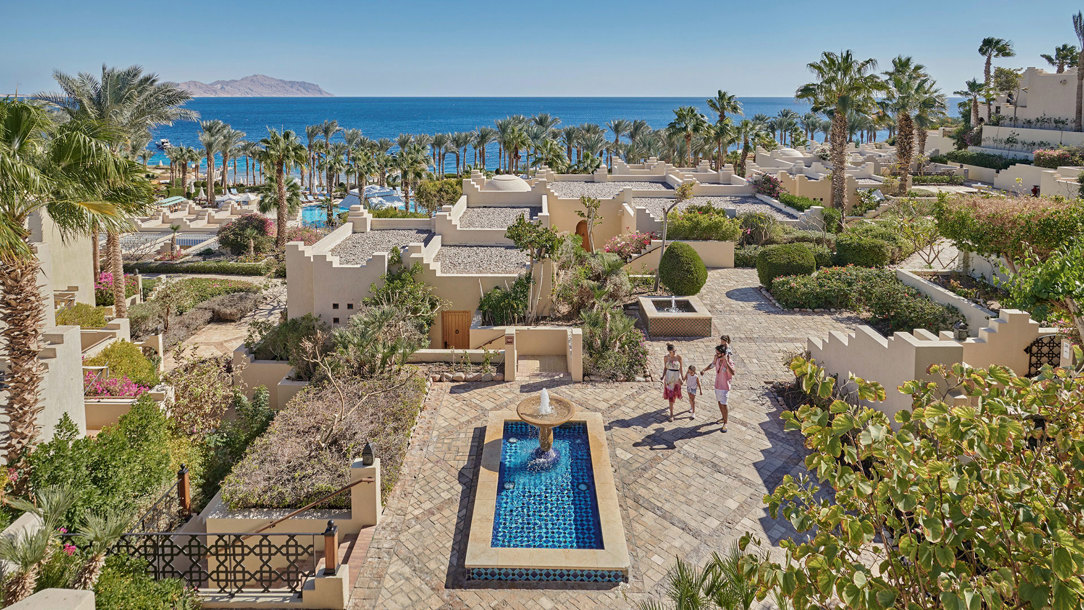
Four Seasons Sharm El Sheik is in the style of an Arabian vil
Sinai for adventurers
Sharm’s claim to fame is, without doubt, the Red Sea: a diving destination of world-class repute thanks to calm, cobalt waters where giant moray, blue-spotted rays and, if you’re lucky, whale sharks are known to roam. PADI (Professional Association of Diving Instructors) is the gold standard of scuba, so adventurers seeking a jaunt into the blue should look for a dive centre with proper accreditation and top-notch reviews.
The centre at Reef Oasis Blue Bay Resort is one such spot. Its ‘house reef’ at the Far Garden site sports a jaw-dropping reef wall, where mounds of brain-shaped and staghorn coral bulge amid angelfish and sullen-faced groupers. Southwest of Sharm and usually reached by boat from the town’s marina, the reserve of Ras Mohammed, Egypt’s first national park, is the crown jewel of the Red Sea’s dive sites. The range of species here means that underwater adventures will always yield something new, with dozens of shipwrecks on an ocean floor that’s home to a hive of barracuda and tuna and the odd visiting turtle.
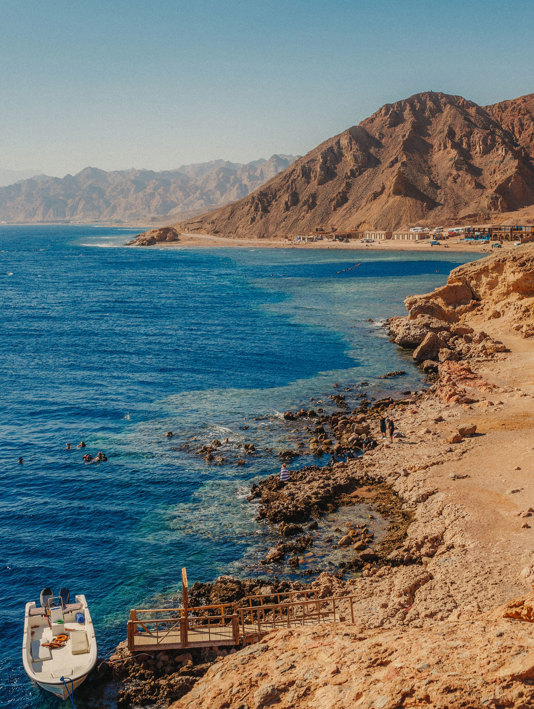
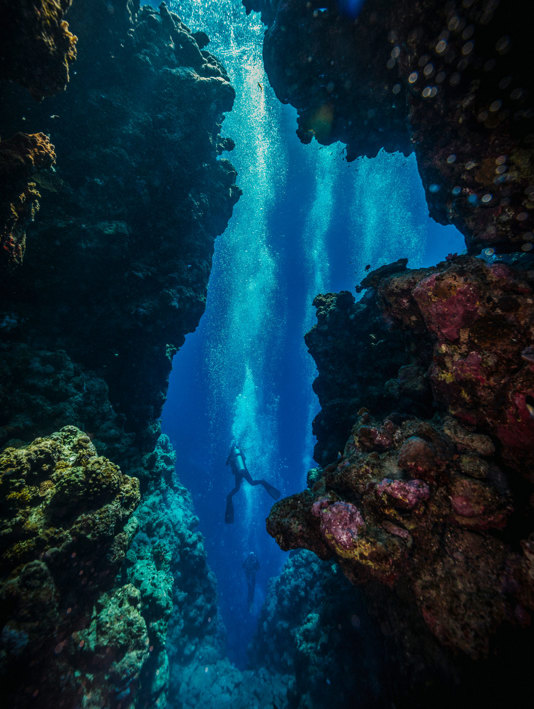

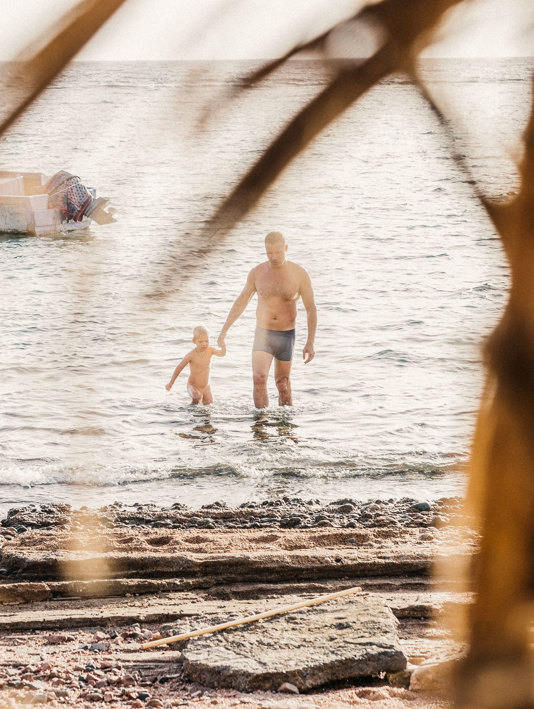
Beach by the Blue Hole, Dahab (Getty Images); the Bells dive spot (Getty Images); Sohal surgeonfish in Ras Mohammed National Park (Getty Images); family fun in the Red Sea (Getty Images)
An hour’s drive north of Sharm and you’ll land in the blissed-out beach-bum town of Dahab. Its most famous dive site is the notorious Blue Hole, which is perfectly safe for those who stay within their limits. While snorkellers pootle around the Blue Hole’s surface, advanced divers enter through the Bells – a chimney-like descent down 32 metres – before drifting slowly to shallower depths past coral overhangs and schools of adorable clownfish. If you’re looking for a safe pair of hands to take you down, the instructors at the PADI-accredited Red Sea Relax dive centre are in a league of their own when it comes to experience and knowledge of the area.
Back on dry land, the 550km Sinai Trail is Egypt’s first long-distance hiking route, developed and run by eight Bedouin tribes. The entire trek takes around 54 days to complete, and is a bit of an undertaking if you’ve only booked a week-long sojourn. It’s far more pleasant to take on a small slice, and break it up with a night near Coloured Canyon, a wind-whipped formation streaked with veins of rust and rose-coloured sandstone.
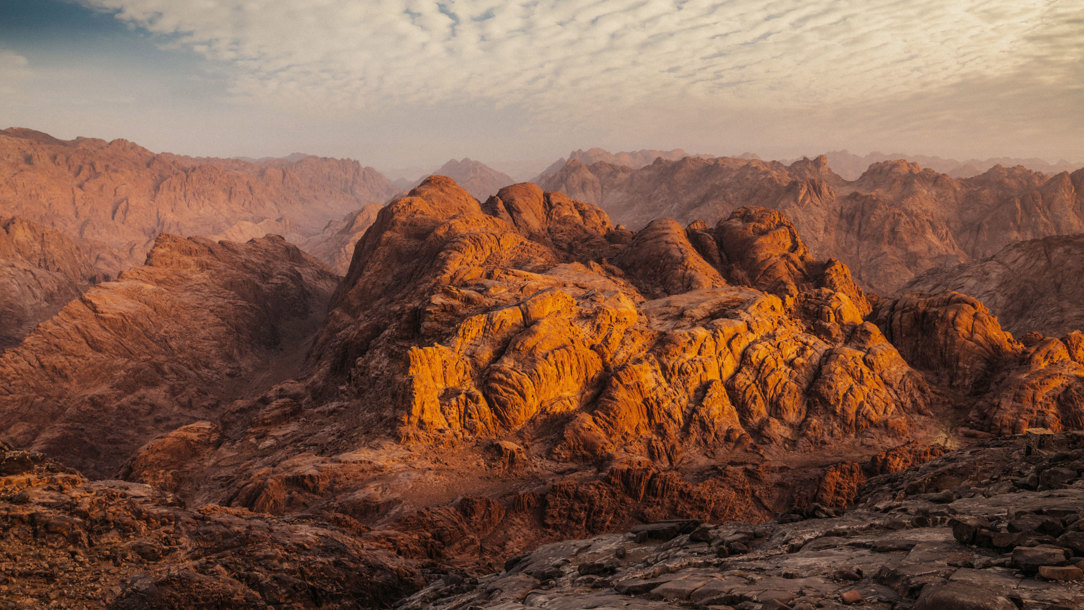
Sunrise over Mount Sinai (Getty Images)
For a taste of the desert closer to civilisation, stay a few nights at Malakot Mountain Oasis, an off-grid eco-camp in a rock-hewn valley just 20 minutes from Dahab. Settle in for a serenity-inducing yoga session before decompressing in one of the outdoor, coal-heated saunas. With just enough room for four or five inside, the mud-brick huts overlook a stone-walled seating area laid out with cosy rugs and cushions where, in the evening, plates of piping hot tagine are dished up over a flickering campfire.
Sinai for culture lovers
Unlike the Nile, the Sinai Peninsula has few ancient Egyptian sites, but history buffs will still find plenty to unearth. Completed in the sixth century, St Catherine’s Monastery is the world’s oldest inhabited Christian monastery, set on the biblical land where God is said to have appeared to Moses in the form of the Burning Bush. As monks still live here, it has limited opening hours, but it’s worth timing your visit right to admire the ancient gold leaf shrines and religious manuscripts housed within.
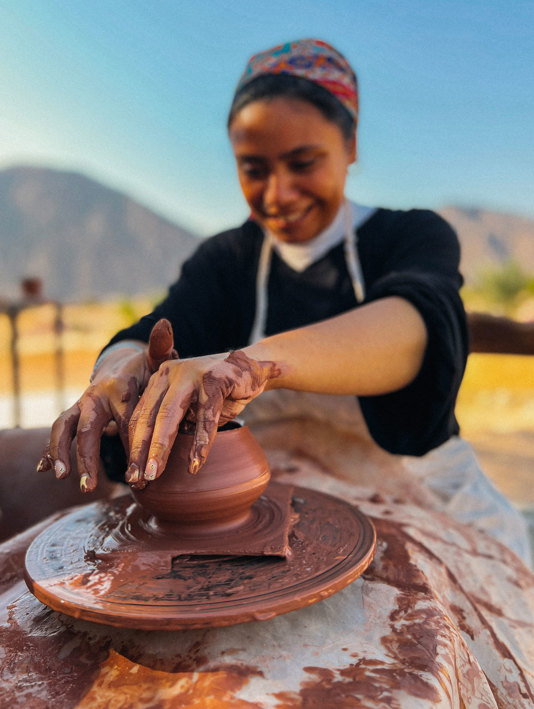
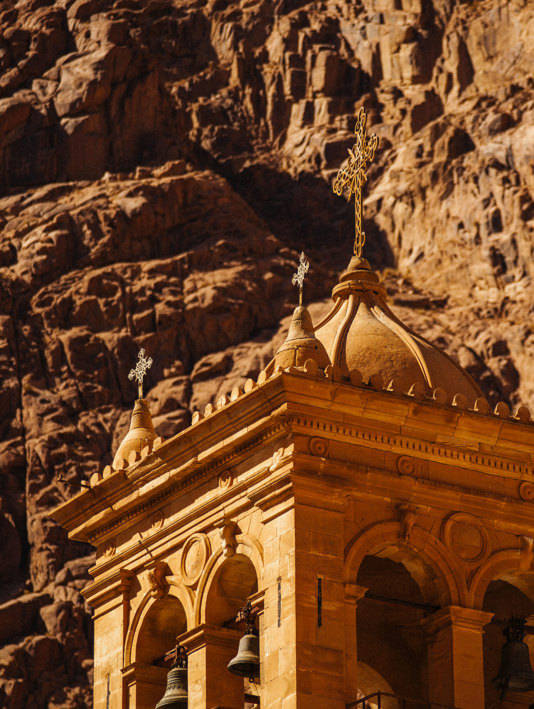
Pottery making on Dar Jan Farm; St Catherine’s monastery (Alamy)
Behind the monastery is a well-trodden trail up to Mount Sinai, which is popular at sunrise. For a more personal experience, Wilderness Ventures Egypt arranges camel-assisted treks near the summit led by local Bedouin, as well as off-the-beaten-track hikes elsewhere in the valley.
If you’re looking to get those creative juices flowing, look no further than Dar Jan, where courses on pottery and mosaic-making are on offer at an 11-acre organic farm and art space. Here, olives, pomegranates and guava grow in the otherwise arid ochre landscape, and hosts Khaled and Gihan go the extra mile with slow-cooked meals amped up by unusual, farm-fresh goodies such as hibiscus and aubergine jam.
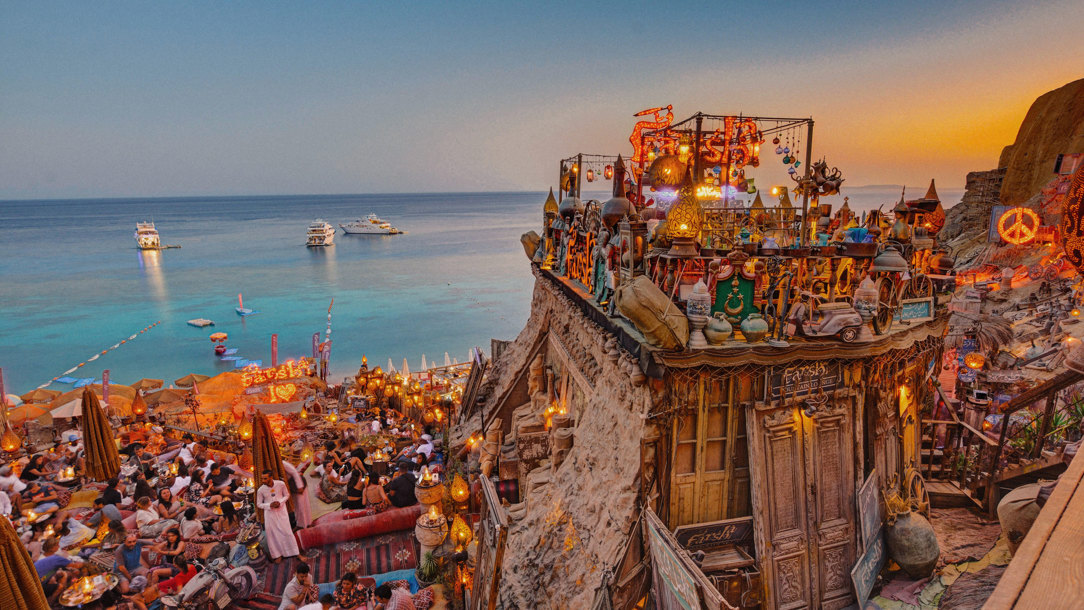
Farsha Mountain Lounge, Dahab (Alamy)
Back in the ‘big city’, recline with a read at one of Dahab’s open-sided waterfront cafés. Shababeek, Flat White and Everyday Old Cafe are three big-hitters for bookworms, with comfortable seats, chilled vibes, and enough coffee and cake to keep you going. In Sharm, Farsha Mountain Lounge is a cross between a hip beach café and a brim-full antiques shop, with low seating spilling on to the rocky cliff to the seaside, illuminated at night by the glow of twinkling lanterns.
For a tranquil stay, opt for Dar Dahab, a chic, design-first guesthouse with ten apartments set just a few steps from the rocky beach. Designed by Swiss architect Anthony Julen, the guesthouse itself was built using only natural materials, such as salt bricks taken from the Siwa Oasis in western Egypt, while shared spaces are decked out with flamboyant palms, locally made henna lamps and floor-to-ceiling windows that gaze out to the sea and mountains of Saudi Arabia.


